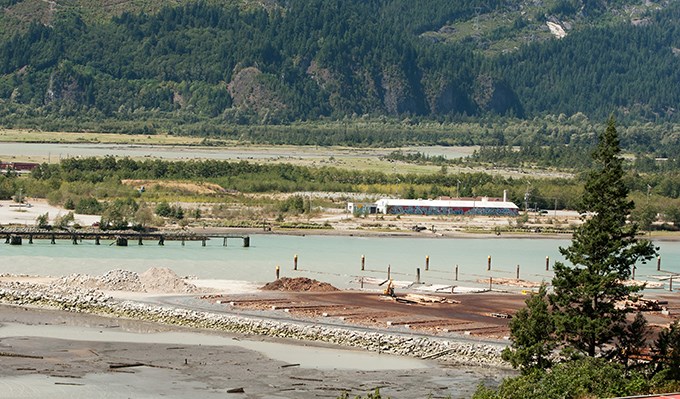Stakeholders in Squamish made suggestions for creating a lower carbon-dependent society to the provincial government in a response paper tabled before council on Sept. 8.
The stakeholders who contributed to the 29-page paper, BC Climate Leadership Plan Response: A Path To a Low Carbon Future, include the District of Squamish, Squamish Nation, the local company Carbon Engineering, the UBC Clean Energy Research Centre (CERC) and Oceanfront developer Newport Beach Developments.
The provincial government, which set goals of 44 million tons of emissions per year by 2020 and to reduce greenhouse gas emissions by 80 per cent of 2007 levels by 2050, had requested feedback into how it could reach its goals.
“It is important to give input. They can’t do this alone,” said Mayor Patricia Heintzman, adding that the Squamish stakeholders organized their collective response over a few weeks this summer.
Nineteen out of B.C.’s 162 local governments made submissions, according to the Ministry of Environment.
In its submission, Squamish offers the creation of an evolving “Squamish Global Innovation Hub.” Carbon Engineering – billed as the world’s largest air capture demonstration plant,located on the Oceanfront Lands – and the Oceanfront itself are put forward as part of that hub, which will “house clean-tech companies and educational facilities within an environment that would serve as a ‘living lab.’”
Heintzman said that the district had already been in touch with UBC and Carbon Engineering about possibly having an educational campus on the Oceanfront lands. Although the idea of the living lab is just in the incubator stage, Heintzman said it is worthwhile to set goals and think big.
She explained it is an “ecosystem approach, where you have venture capital and innovators and academies and researchers.”
The report recommends the provincial government support innovation hubs.
Councillor Susan Chapelle called the report an “aspirational document” that may set Squamish apart for investment in climate leadership. “We have the opportunity to plan for what may become a centre for excellence in energy research,” she said.
According to the report, the aim is for the oceanfront lands to be a place for scientific research, education and training, industry collaboration and innovation.
The Squamish report puts forward strategies to achieve current and future climate goals, including supporting B.C. “clean” energy companies that focus on wind and solar energy, hydrogen and fuel cell technology and natural gas engines.
Another strategy mentioned is investing more in clean energy education and training. B.C. graduates 40 per cent fewer engineering students than other provinces. At the graduate level, there are 50 per cent fewer graduates in B.C. than in Quebec and Ontario, according to the report.
Strengthening climate-relevant legislation and policy are other solutions to enable the province to meet its greenhouse gas reduction targets. The provincial government has already increased the carbon tax to $30 from $10 per tonne.
In 2008, the Liberal government launched the Climate Action Plan to reduce greenhouse gas emissions. This year it created a Climate Leadership Team that includes two Sea to Sky Corridor representatives, MLA Jordan Sturdy and Squamish Nation Chief Ian Campbell.
A final Climate Leadership Plan is expected to be unveiled in the spring.




